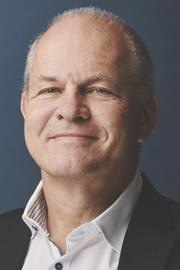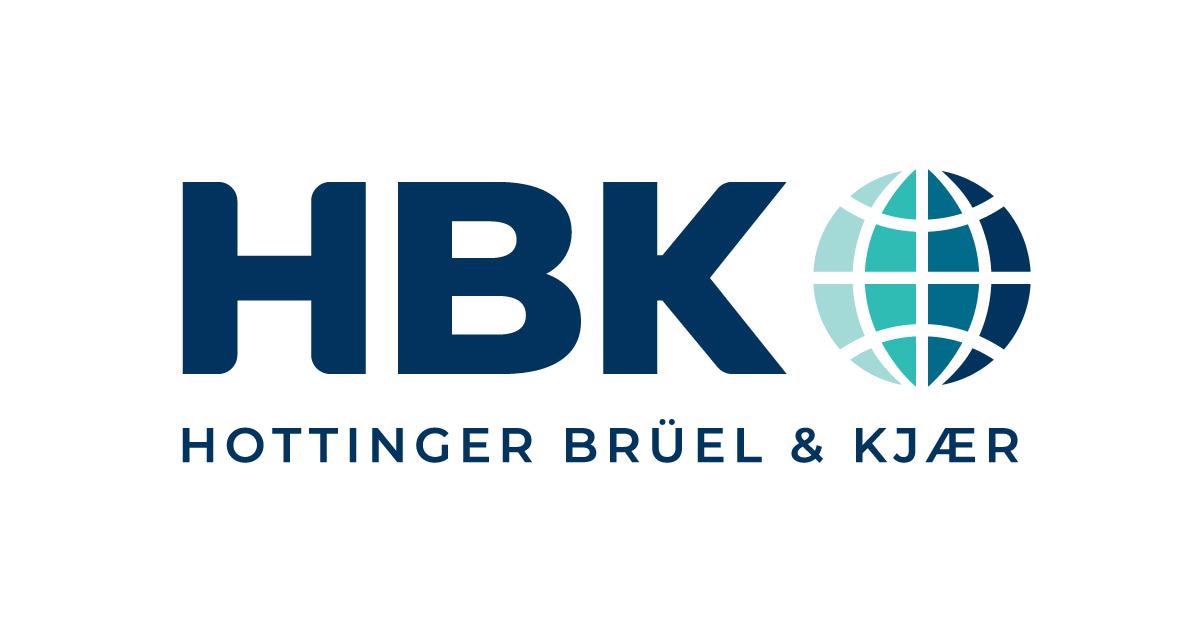AZoM talks to Jens Wiegand, HBK’s Chief Technology Officer (CTO) and Senior Vice President Electronics & Software.
Optimizing Product Development in a Rapidly Changing Market
Businesses around the globe are under pressure to shorten their product development cycles while reducing cost and maintaining quality. This is due to relentless competition, high customer expectations, and time criticality.
Jens Wiegand, Chief Technology Officer at HBK, described how global trends in product development are accelerating and shifting.
Jens is Chief Technology Officer (CTO) and Senior Vice President Electronics & Software at HBK. He is responsible for product engineering and understanding and anticipating consumer and market trends.
Together with the HBK business segments, he assesses the potential and then works with the development teams to form a technology strategy to drive state-of-the-art solutions that will help customers innovate faster.
What Trends Does HBK See in Product Development Across Different Industries?
There are a number of current and underlying trends which influence product development, but the standout feature has been the investment in simulation and software to left shift product development and, in some instances, entirely disturb the business model.
COVID-19 has sped up advancements that would otherwise have occurred over the next decade. For instance, products or businesses like Cinch and Zoom. Microsoft® is a great example of pushing the envelope and creating an ecosystem around tools like Teams.
The automotive market is undergoing a transformation of the century by means of the so-called ACES (Autonomous, Connected, Electric and Shared) mobility.
This and other underlying trends will have a major effect on plane, car and industrial asset manufacturers, among others, especially in terms of time to market and future investments.
Why are Shorter Product Development Cycles Becoming so Important for Your Customers?
The demands of developing new systems to stay relevant and, at the same time, compete with the new giants like Tesla are huge for traditional OEMs. The experience of manufacturing products does, of course, play a role.
Yet, the whole development cycle must be agile, robust and cost-effective. The challenges of developing systems, for instance, battery technology with range, reliability and robustness, must be balanced with the time-to-the-market.
The only way to attain this is by reducing the development cycle via virtual testing and carrying out verification, correlation and validation early to increase confidence in the virtual tests.
What are the Different Phases of the Product Development Cycle?
Generally, a product development cycle begins with computer-aided engineering, followed by design optimization techniques which are used to refine the design according to a certain target.
This involves making decisions regarding a number of factors, including the warranty period of assets, cost targets and many other targets, for example, power, space and weight.
Advanced prototyping, simulation and virtual testing techniques and capabilities provide the first results with an optimized design in place. Yet, the complexity of hardware and different test scenarios are effort- and cost-drivers for the validation and verification phase of those physical designs.
Previously, at this stage, OEMs would build their first mock-ups or prototypes to measure accurate loads, attain motion data and the resulting damage information for a vehicle.
Simulated environments and prototype environments enable customers to simulate parametric variations of structures, loads, noise and many other parameters to validate ideas in a virtual environment designed to simulate real use scenarios with today’s advances in virtual testing.
Prototypes are built and tested upon completion of the virtual optimization. To ensure that the prototype adheres to the physical design criteria, physical testing techniques are used.
Finally, before release, the homologation process begins to ensure that vehicles, for example, adhere to the requirements of legislation and standards in terms of exhaust emissions and noise emissions, etc., prior to being released for manufacture and onto the market.
These steps all make up the product design life cycle. Once the product is in the market, it produces a wealth of data and crucial information during its lifetime.
For the next stage of the product development cycle, these real-world data sets are vital for creating critical information for designers, which can help enhance the next generation of the product. The open, continuous and interoperable data flow is the paradigm of those iterative design processes.
Which Product Development Phases Provides the Greatest Opportunity for Improvement?
We have directed our focus on ways to accelerate and improve the product design life cycle, specifically in terms of durability and reliability.
This type of design optimization is a key opportunity that must be explored as the current convergence of classic fatigue testing, classic material science and new methods like those utilized in e-power could be areas where the cycle can be shortened.
For more than a decade, engineers have utilized computer-aided design tools and techniques. It has reached the point where computer-aided simulation has become a standard tool in the first design phase.
Simulators and virtual testing provide OEMs with significant potential to gather information or to ingest parametric variations early in the development process. For instance, gaining insight into how the product will behave in real-life scenarios can significantly reduce the design life cycle.
Yet, based on feedback from customers, it is understood that the trust in virtual models varies based on the complexity of the system and from the whole vehicle to components layers.
HBK’s main drive is to help customers bridge the gap between the physical and virtual world. We supply actionable insight via our advanced test equipment and instruments, augmented by the power of our services and software.
For OEMs, test automation is also crucial. It is vital to manage complex tests and test scenarios as efficiently as possible once a prototype reaches the physical testing stage.
These tests can involve thousands of sensors. Even if just one sensor fails, the outcome can be quite negative, resulting not only in the loss of thousands of hours of testing but also terabytes of valuable data.
In combination with physical competence and domain expertise, these three key areas – design optimization, simulation/simulators and test automation – can create new insights to help OEMs accelerate time to market.
Jens Wiegand, HBK’s Chief Technology Officer (CTO) and Senior Vice President Electronics & Software shares his thoughts on the role technology plays in shortening product development cycles without compromising quality and predicts the next big breakthroughs for product development teams.
How can Technology Help Shorten Product Development Cycles?
Today, many macro trends, for instance, computational power, connectivity standards and artificial intelligence (AI) allow the acceleration of virtual testing concepts, and experimental prototyping will inevitably become more frequent.
The automotive industry is already extremely knowledgeable and experienced in these areas, but other industries could, should and probably will apply simulated environments and simulation technology more in the future.
There are scenarios, however, where capturing the physics using simulation methods – especially multiphysics – remains difficult.
Once integrated into the product, many active systems are extremely challenging to model using state-of-the-art techniques. Here, the trend is more towards iterative prototype testing at the subsystem level than the complete system level. This helps engineers to understand the failure modes early in the process.
Over the past 20 years, significant innovation has been seen in these technologies. In short, simulating systems or subsystems, using either physical subsystems on a rig or simulation or computer-aided-engineering tools, will help reduce the development life cycle.
Virtual modeling and analysis must be aligned with physical tests and measurements to maximize the potential of this digital transformation and produce cleaner, more actionable data.
Is it Possible to Shorten Development Time Without Increasing the Development Costs and Compromising Quality?
The technologies mentioned have not only decreased development costs, but they also allow ‘design for X’. The term design for X has been used to mean ‘design for quality’, ‘design for cost’, ‘design for warranty,’ and so on – essentially design space optimization.
To return to the example of a modern e-car – the price of the battery often accounts for over half of the car’s production cost. Car owners and leasing companies must know how long the battery will last.
Decreasing development time via design optimization, the utilization of simulation and automated testing will not compromise quality at all – quite the opposite; these technologies will enhance the overall quality.
Where Do You See the Next Big Breakthrough for Product Development Teams? Will this Involve Using Smarter Devices, More Technology, Remote Working, Digital Prototyping, etc.?
The convergence of software and hardware capacities and the utilization of model-based development will further drive the digital prototyping area. This is an area that HBK is looking to expand into.
The recent COVID-19 pandemic has now become a driver, accelerating an entire range of product development trends and new ways of working. People are now used to working remotely in global teams from home offices, a situation which also applies to engineers who are designing trains, cars and other complex products.
This necessary shift in ways of working will speed up the transformation in collaborative tools and lead to the development of more robust virtual or remote environments across the entire industry. OEMs will continue to face increasingly complex and difficult challenges, not just during the pandemic.
Our goal is to cope with those challenges and accelerate the digital transformation using innovative solutions. HBK supplies customers with expert insight through advanced test equipment and instruments, augmented by the power of our software and services.
This enables customers to decrease time to market, enhance processes, quality and yield. In this way, Spectris know-how creates value for the wider society, as customers design, develop, test and manufacture products to make the world a cleaner, healthier and more productive place.
To manage the interoperability of the different solutions and data during the design life cycle, open systems will become increasingly important.
This openness will provide value for HBK customers, enabling them to pick the best solution and the best insights from the sea of data and support them in taking more energy-efficient, innovative and safer products to market as fast as possible.
About Jens Wiegand
Jens is a visionary leader with over 25 years of experience in establishing or restructuring digital business’s across diverse industries in both national and international companies. He is recognized for his talents in strategy development, innovations management, and digital transformation. He converts strategic plans into tactical reality by building organizations to drive a viable business.
industries in both national and international companies. He is recognized for his talents in strategy development, innovations management, and digital transformation. He converts strategic plans into tactical reality by building organizations to drive a viable business.
He has a diverse background in business and engineering management; distinguished for an entrepreneurial mindset, creative problem solving, cross-functional and international teams, agile methods, and a bottom-line orientation.
Jens is a moderator and passionate IoT and digitalization evangelist combining business acumen with digital innovation to align existing business efficiencies with new disruptive market models and innovation levers. He brings strong expertise in Machine Learning (AI), Big Data, Middleware, Security, embedded software, and industry-specific 4.0 expertise across several verticals as Industrial, Avionics, Automotive, and Medical.

This information has been sourced, reviewed, and adapted from materials provided by Hottinger Brüel & Kjaer (HBK).
Disclaimer: The views expressed here are those of the interviewee and do not necessarily represent the views of AZoM.com Limited (T/A) AZoNetwork, the owner and operator of this website. This disclaimer forms part of the Terms and Conditions of use of this website.